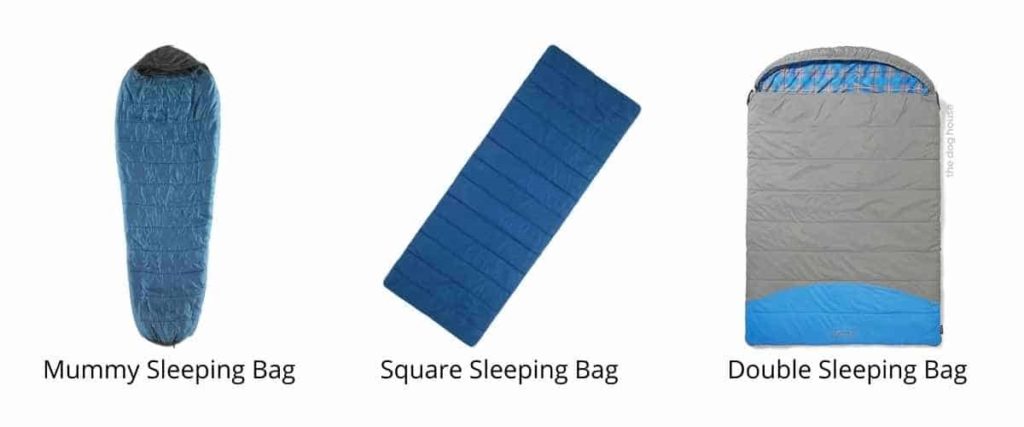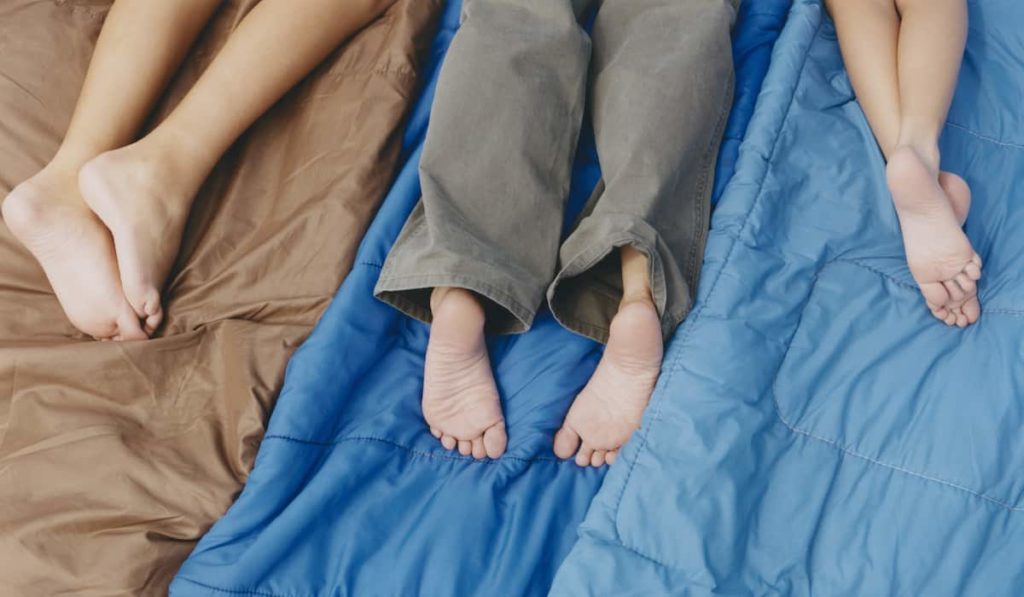You may think it is actually perfectly simple to buy a sleeping bag. After all, their purpose is to keep you warm and dry, so any will do?
Well actually, no two sleeping bags are made the same.
You can buy some which are only good for warm summer weather, and others which will be perfect in chilly winter conditions. Some are tapered to trap the heat, and others will allow you to stretch out (or be joined by someone else).
The right sleeping bag can make all the difference between a restful, comfortable nights sleep and suffering in dangerous conditions. In this guide, we will take you through everything you need to know about sleeping bags before you buy the one which is perfect for your needs.
Types Of Sleeping Bag
Sleeping bags come in three different shapes generally:
- Mummy Sleeping Bags
These taper in towards the feet, which reduces the amount of air circulation in the bag and should keep you warmer
- Square Sleeping Bags
This is the traditional shape, which is great for anyone who doesn’t like to feel too constricted and will want to stretch a bit
- Double Sleeping Bags
Looking for more space, or want to be able to fit two people in one bag to take up less room in the packing? A double bag will allow more space, and you can usually also use them as duvets

Types Of Sleeping Bag Insulation
- Down Sleeping Bags
Designed for colder nights, these are the pinnacle of warmth. They are lightweight, with low bulk design, but can lose their warmth if they get wet so are for cold, dry nights.
They will have different down ratios and warming ability ratings. The former will tell you the amount of down in the sleeping bag (for example 90/10 will contain 90% down plume feathers and 10% non-down feathers). The latter informs you how lofty the down is: 600 fill is good, 700 is high quality and 800 is the best and used for winter expeditions in an alpine environment
- Synthetic Insulation Sleeping Bags
The most common form. It is the cheaper option and works by trapping as much warm air as possible. They are resistant to wear and tear but are bulkier and can weigh more because more filling is needed to have the same heat properties as down. These are also best if you need something which is waterproof
Warmth Ratings
This can come as two different ratings – season, and comfort. The former describes when in the year the sleeping bag can be used, and the latter is the specific temperature range in which it can be used.
Season
- One Season is perfect for summer use. The sleeping bag will be lightweight and will pack smaller, and provides cover without much warmth.
- Two Season is an extended summer sleeping bag, taking you through from late spring to early autumn. It is a bit warmer, and may also be best for summer months if you will be sleeping outdoors when the temperature drops.
- Three Season is for spring/summer/autumn and is also perfect for when the temperature dips below freezing point if you are sleeping inside.
- Four Season is a winter-ready bag for harsher weather conditions, which should keep you warm in very low temperatures
- You can also get Four+ Season (or Five Season as it is sometimes referred to), but these are usually for high altitude expeditions so maybe a bit much for most UK camping trips. Look for one which can maybe be altered to take you throughout the year
Comfort & Warmth
Sleeping bags generally offer an upper limit and a lower limit (comfort and extreme). If you are more susceptible to the cold, choose a higher comfort rating. Extreme is usually a measure of survival conditions, but they are a guide, so don’t take it as gospel.
Men usually sleep at a warmer natural temperature than women and therefore don’t need bags which are as warm, but nobody knows your own comfort levels better than you.
Materials
Aside from the inner insulation material, the outer and lining are also important.
Fine nylon or polyester is usually what is used for the inner lining, but cotton flannel can also be used. This isn’t good for cold conditions, however, as it traps moisture.
The outer fabric should be safe from tears, rips and moisture. Nylon-ripstop is durable so good for heavily active trips, and Dryloft is a water-resistant breathable fabric commonly seen too.
Size
There are two measurements to look at here – pack size, and overall size.
The pack size is how large the sleeping bag is when it is stored in its bag or sack. This is important to look at if you will be carrying the sleeping bag for long distances but isn’t so important if you are a family camper.
The size when it is folded out and ready to use is also important. There will usually be length, shoulder width, waist width and ankle width measurements. The majority will be perfectly suitable for most body shapes but double-check in case you want a tighter or looser fit.
Weight
This can vary from less than 1kg to closer to 5kg. Down is usually lighter, but just because a sleeping bag is heavy doesn’t mean that it is better at keeping the heat in.
Other Factors To Look For
- Baffles
These are the compartments which hold the filling that keeps you warm (basically all the padded quilted bits between the sewing). They are separated so the filling stays evenly spread.
- Zips
These can be left- or right-handed. The easiest for you would be a zip on the opposite side to your leading hand (so if you are right-handed, opt for a left zip).
Most zips can be unzipped right the way down to make it easy to get in and out of, and also means it can be used as a duvet if you just need something in the daytime. Some also give you the ability to zip two together.
Look out for features such as anti-snag zip liners which means that the zip won’t catch on the liner when being used, and zip baffles which is an insulated section behind the zip which stops air getting in. Velcro covers are also a good idea, so the zip doesn’t come down when you’re sleeping.
Extras You Should Buy
- Sleeping Bag Liners
We recommend that you line your sleeping bag to help keep it clean and fresher for longer (and can also make it even warmer if needed). They are available as fleece, cotton and silk depending on how warm or comfortable you need to be
- Sleeping Mat
Use one of these as a barrier between you and the cold ground, and a form of cushioning for comfort. You can use anything from a foam mattress to a blow-up bed
- Pillow
You use one at home in bed, so sleeping bags should have one too. Blow up designs will be firmer, but ones which squash into a carry bag will be softer. Some sleeping bags could have built-in pillows




